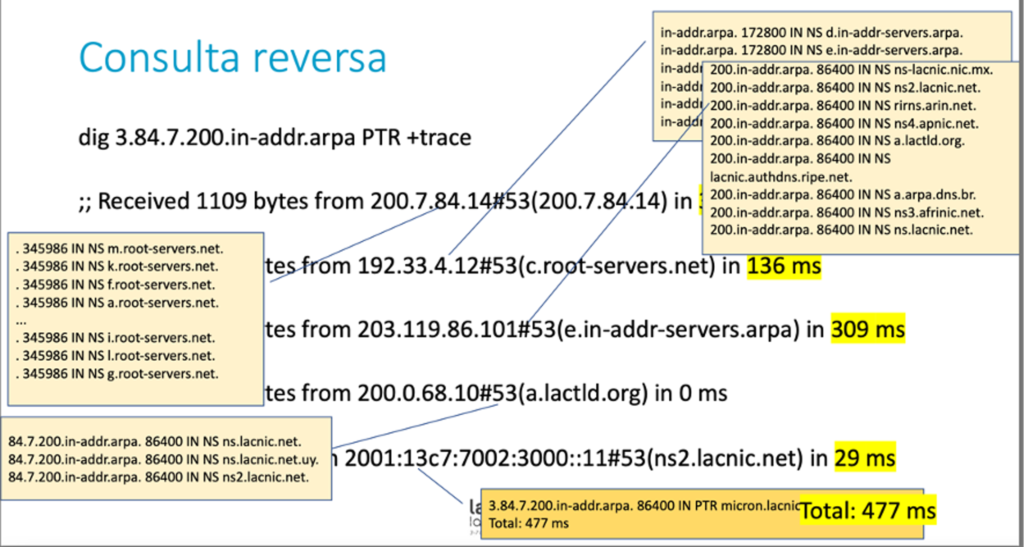Promoting Anycast DNS and BGP Collector Initiatives in the LACNIC Region
25/10/2022

During its event in Santa Cruz, LACNIC presented two initiatives for the deployment of anycast DNS servers for reverse zones and BGP route collectors for the purpose of studying regional traffic.
Guillermo Cicileo, Head of Internet Infrastructure Research and Development at LACNIC, explained that an authoritative DNS server is one where the zones for which a server responds actually reside. It is an essential part of the DNS name resolution chain.
Anycast technology allows using the BGP protocol to publish the same network prefix from different locations, thus bringing the user closer to something we want them to be closer to.
This service makes it possible for an end user not to connect to the original server, but instead to access the closest copy of that provider. This increases stability and allows obtaining information faster. “It is important to have authoritative copies locally,” the expert observed.
The importance of local DNS servers lies in the fact that they reduce the criticality of DNS servers, for example, root servers or ccTLDs, traffic only affects the nearest servers and the root zones, and those of the ccTLDs can also be accessed more quickly.
Cicileo stressed that LACNIC’s reverse zones are important for all verifications based on mapping an IP address to a name.
The following graph shows a reverse query and the times involved.

In the first example, the query took three milliseconds because it was sent to the resolver, while the following query went to a root server and took 136 milliseconds. “Notice how important it is to have the root server nearby,” Cicileo said.
He pointed out that a reduction of query times requires keeping local copies of the information.
Reverse zones. In the case of reverse zones, LACNIC is also trying to bring copies to local traffic exchange points (IXPs) and installing DNS server copies to reduce access times. Copies have also been deployed in the LACTLD cloud.
BGP collectors. Cicileo undertook this project to collaborate with the global information service on the status of Internet BGP routes. The goal of this initiative is to have better information on routing behavior in the region.
While there are already several initiatives to measure and collect information on BGP, in Latin America there are few collectors and little peering with these collectors.
“The problem is that the information is usually insufficient, it is often not uniform, and provides only a partial view of the situation,” Cicileo explained. This is the reason why LACNIC is deploying BGP collectors at Internet exchange points that will join the two that are already in operation: two RIPE RIS collectors (São Paulo and Montevideo) and two route-view collectors (Santiago and São Paulo). “This allows covering both global and local tables. We want to collaborate with similar projects to maintain a single format and find an architecture that can be easily replicated,” Cicileo added.
The information we collect will serve to provide tools to operators and researchers, to facilitate the detection of routing issues, and to have information on the size of BGP tables, real-time BGP updates, and prefix visibility.
He stressed that this tool will allow a better understanding of the stability and robustness of the routing system and regional Internet topology.
In closing, Cicileo invited regional actors to install BGP collectors and anycast DNS copies.
We invite you to watch the full presentation, which is available here